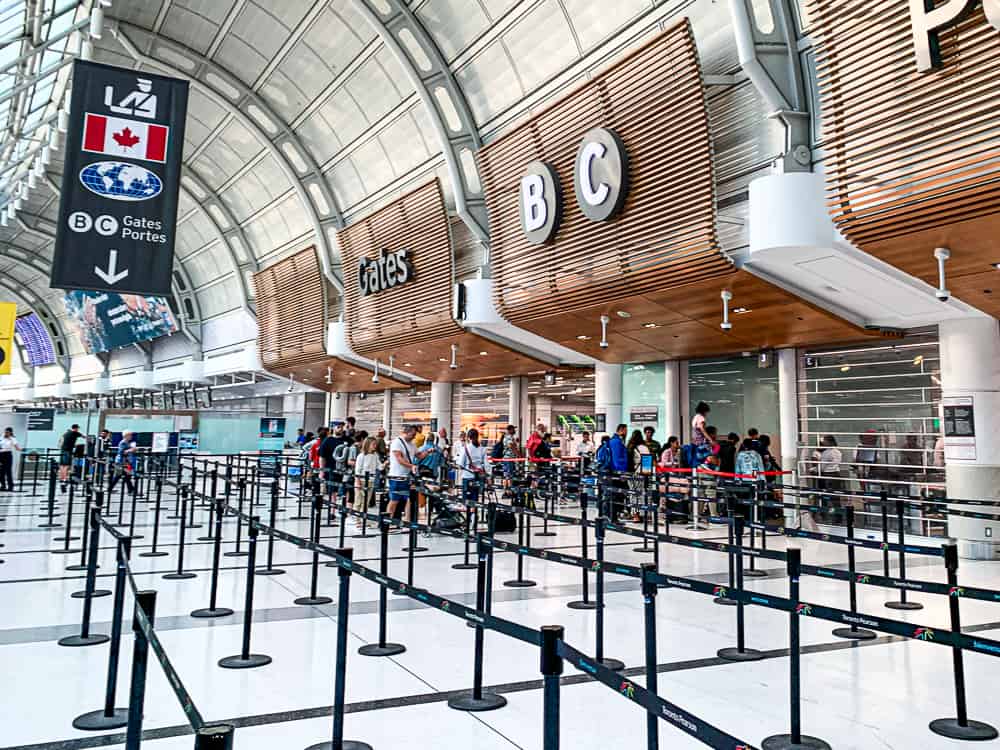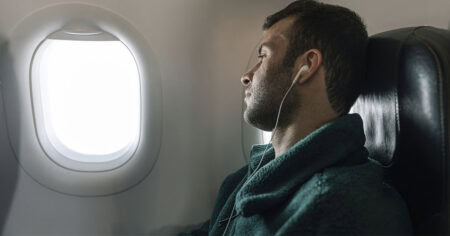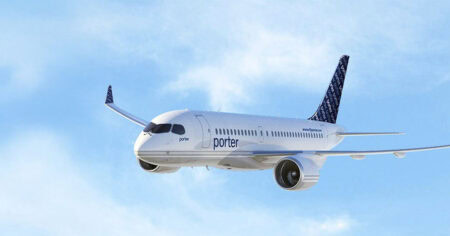In the world of aviation, ensuring flight safety is an undeniable priority. This is why airport security checks play such an essential role. Everyone has experienced these crucial stages of their airport journey, whether they are occasional or frequent travelers. But how do these airport security checks really work? Between the European regulations that dictate standards and procedures, the various checkpoints through which each passenger passes, and the importance of presenting valid identification, the fundamental objective is to ensure flight safety. Here’s a behind-the-scenes look at what goes on behind the scenes to keep air travel smooth.
What Happens During Security Checks at the Airport?
The airport security screening process involves several simple steps. All you have to do is present your travel documents and boarding pass to the security staff, and then leave your personal belongings, including your carry-on baggage, in the lockers provided. Liquids, gels and aerosols of less than 100 ml should be placed in a sealed clear plastic bag, and electronic devices such as laptops, phones and cameras should be removed from their cases. Accessories such as belts, coats and jackets must be kept separate from carry-on baggage, as must metal items such as keys, coins and some jewelry.

Security personnel will then invite passengers to pass through the security gates. In accordance with applicable regulations, random checks, such as baggage searches and pat-downs, may be conducted.
Given the sometimes lengthy waiting times, it is recommended that you arrive at the airport early to ensure a smooth journey. For long-haul flights, we recommend arriving up to three hours prior to departure, while for short-haul flights, we generally recommend arriving two hours prior to departure.
Random Searches and Checks
If you set off a metal detector alarm, if your baggage is found to be suspicious when x-rayed, or if you are randomly selected, you need to undergo additional screening.
This procedure can include various steps, such as:
- Hand search with a portable metal detector
- Palpation
- Body x-ray using a body scanner
- Sampling for the detection of traces of explosives
Random selection for ancillary screening is common practice at major airports worldwide.
Explosive Trace Detection (ETD) is another security measure used to ensure flight safety. Screening officers can take samples from a variety of items, including your carry-on luggage, clothing, shoes, and even your laptop if necessary.
What Luggage Should Be Carried in the Cabin?
Distinguishing between what can be carried in the cabin and what must be packed in the cargo hold can sometimes be difficult. The golden rule? Liquids should be kept in containers of less than 100 ml (with the maximum quantity clearly visible) and electronic devices should be carried at all times.
Liquids, Pastes, Gels and Creams
You can travel with liquids, pastes and creams in the cabin, but they must be kept in a single plastic bag. You must also ensure that they meet the following conditions:
- Containers must be placed in a closed transparent plastic bag.
- Each container in the bag must not exceed 100 ml.
- Bag volume must not exceed 1 liter.
- Maximum bag dimensions are 20 x 20 cm.
Electronics
To prevent damage during air travel, spare and external lithium batteries are not allowed in the cargo hold, but are permitted in the cabin. Electronic devices such as computers, tablets and drones must therefore be brought along with you, on all airlines.
Duty-Free Items, Baby Accessories, and Medicines
With Air France, duty-free items purchased on board or at the airport, as well as children’s accessories (if you’re traveling with a child), such as strollers, car seats and diaper bags, are not considered baggage or accessories and may be carried onboard, subject to space availability. If applicable, check-in is free at the time of boarding.
Baby food, medications (with a prescription or doctor’s note) and special diets are also allowed in the cabin without restriction.
Portable electronic medical devices containing lithium metal cells or batteries (not exceeding 2 g of lithium and 100 Wh) may be carried in the cabin without prior approval. If your medical device exceeds 100 Wh, you must obtain prior approval from your travel agent or airline.
Animals
Air France allows its passengers to travel with pets. A dog or cat weighing no more than 8 kg (including bag) and aged at least 15 weeks old may be carried in the cabin, subject to prior approval by Customer Service. For flights within mainland France (including Corsica) and between mainland France and Guadeloupe, Martinique and Reunion, the minimum age requirement is 8 weeks. All vaccinations must be up to date, and a passport is required.
Service dogs are also allowed on Air France flights, according to international regulations. They must be trained, meet all health requirements of the country of departure, arrival and/or correspondence, and be equipped with a harness.
Bottom Line
Airport security can be a worrisome source of stress for some people. But with a little advance preparation, everything can go smoothly and you won’t have to part with that brand new bottle of perfume you bought before you left just because it doesn’t meet the maximum amount. Safe travel!
Frequently Asked Questions About Airport Security Checks
What Is Allowed in the Aircraft Cabin?
Liquids, gels, and creams are permitted in containers of less than 100 ml in a sealed transparent plastic bag. Electronic devices such as computers and tablets are permitted in the cabin. Some airlines, notably Air France, also allow duty-free items, baby supplies, medicine and special dietetic foods. Pets may be allowed under certain conditions, with special rules for assistance dogs.
What Happens at Airport Security Checks?
The security screening process at the airport includes presenting travel documents and boarding passes, placing personal items in designated bins, placing liquids, gels and aerosols under 100 ml in a clear plastic bag, removing electronic devices from bags, separating accessories such as belts, coats and jackets from carry-on baggage, and placing metal items such as keys and coins aside. The next step is for security personnel to escort passengers through the security gates, with random searches possible.
Does Jewelry Ring When You Go Through Airport Security?
At airport security checkpoints, metal jewelry such as bracelets can set off detectors. However, gold, silver and other precious metals generally pass through without a hitch. Metal hair clips can also set off detectors, so opt for fabric or metal-free alternatives.
Can I Bring Liquids and Food in the Cabin?
Yes, you can bring liquids in the cabin. Containers, which must not exceed 100 ml, must be placed in a closed transparent plastic bag. Bag volume must not exceed 1 liter and maximum dimensions must be 20 x 20 cm. Solid foods are permitted.
Why Are Hands Checked at Airports?
Hand checks at airports are designed to detect traces of explosives. The European Union has been requiring this measure for passenger safety for several years. Quick and accurate samples are taken from the passenger’s hands and waist for immediate analysis. Passengers are randomly selected by computer after passing through a metal detector.







